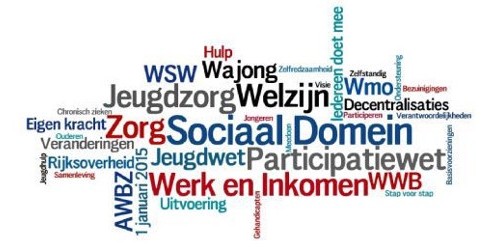De invoering van de Participatiewet, Jeugdwet en Wet Maatschappelijke Ondersteuning in januari 2015 betekende de start van een grote transformatie in het sociaal domein. Vanaf dat moment werden gemeenten volledig verantwoordelijk voor jeugdzorg, werk & inkomen en zorg aan langdurig zieken en ouderen. In het kader van ‘meer met minder, dichter bij huis’ zijn gemeenten op zoek gegaan naar manieren om, bijvoorbeeld op het gebied van zorg, kostenbesparingen gepaard te laten gaan met een verbetering van de kwaliteit. Uitgangspunten zoals ‘op eigen kracht’ en ‘in het eigen netwerk’ staan daarbij centraal. Maar hoe weten we van tevoren of een nieuwe interventie het gewenste resultaat oplevert?
Topics: Stakeholders, Social Return on Investment, Outcome-sturing, Transitie, Maatschappelijke business case
Wat levert transformatie van het zorglandschap Gemeente Nijmegen op?
Een transformatie van het zorglandschap met betere én goedkopere zorg? Gemeente Nijmegen beoogt dit te bereiken door het zorglandschap – samen met welzijns,- en zorgaanbieders, zorgverzekeraars, huisartsen en de burgers – te gaan transformeren. Hoewel deze transformatie kan plaatsvinden binnen een organisatie is gemeente Nijmegen ervan overtuigd dat de grootste slagen zijn te maken door samenwerking in de zorgketen en het daarbij betrekken van het sociale netwerk van de cliënten. Om de transformatie te bewerkstelligen moet zorgvuldig worden afgewogen waar bezuinigingen moeten worden vergezeld van investeringen om een zogenaamde “zorgzame regio” te blijven. De transformatie is een combinatie van afbouwen én opbouwen. Op welke onderdelen zet je dan meer en juist minder in?
Topics: Stakeholders, Social Return on Investment, Outcome-sturing, Transitie, Maatschappelijke business case
How can we become data-driven without data driving us crazy?
Impact measurement often requires organisations to collect more data. But with more information, the risk of information overload and attention fragmentation increases. How can we cope? How can we become data-driven without data driving us crazy?
Topics: Impact measurement, Social impact, Stakeholders, Impact investing
How can social investors measure the social impact of multiple projects in a cost-efficient way?

In the philanthropic sector, measuring social impact is still perceived as a challenge. The number of projects a social investors funds, combined with their diversity often result in large time and resource investments for both the investor and the investee (or grantee). Many social investors therefore feel they do not have the means to measure more than a few outputs, like the number of participants or workshops, or the total amount of volunteer work. Although this is a good starting point, it only scratches the surface of what the project or program has established, and tells you nothing about the true impact (and value) it has created. Has the target audience really been reached? Have their circumstances been changed? Only by giving a voice to the beneficiaries will you be able to decide if the right investment choices have been made.
Topics: Impact measurement, Value, Social impact, Stakeholders, Social change, philanthropy
What is the most important aspect of social impact measurement?

Although many organizations are trying to capture social value behind their desk, we believe that “value is in the eye of the stakeholder, like beauty is in the eye of the beholder”. This statement underlines the importance of involving your stakeholders before and during your social impact measurement.
Topics: Impact measurement, Value, Stakeholders, Social Return on Investment

Over the last year or so there has been big increase in interest in measuring social impact. Must be a good thing? But with the last few reports released Jeremy Nicholls has begun to wonder who all this measurement is for.
Topics: Impact measurement, Benefits, Stakeholders

More than 1 billion more people are now earning more than $1,- a day. Some call it progress, others, the myth of the meritocracy. In his latest blog, Jeremy Nicholls tackles the social contract.
Topics: Impact measurement, Stakeholders
-1.jpg?width=232&name=GT%20Sinzer_logo_screen_descriptor%20(1)-1.jpg)



